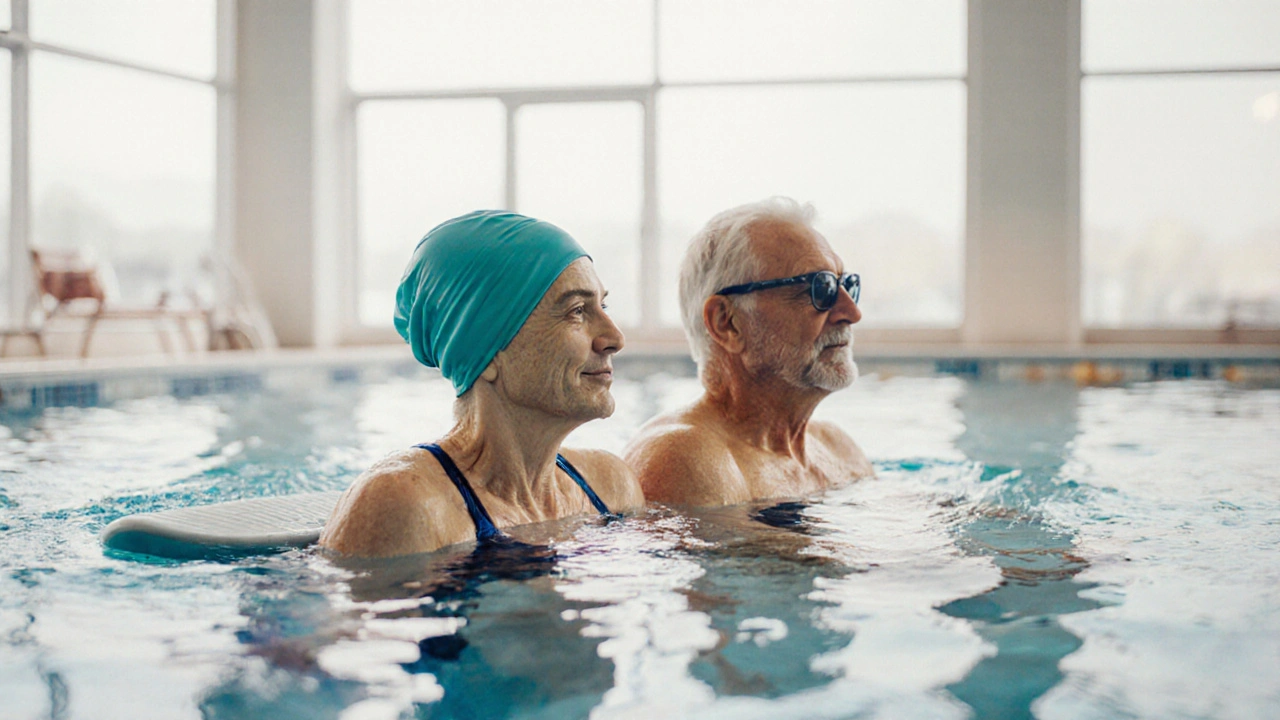Swimming Benefits: The Easy Way to Get Fit
Ever wonder why doctors, athletes, and everyday people all rave about swimming? It’s not just because a pool looks relaxing. The water does real work for your body, and you don’t need fancy equipment or a grueling schedule to see results.
Cardio and Muscle Strength
When you move through water, you’re doing a full‑body cardio session. Your heart pumps faster, delivering oxygen to muscles that are constantly being challenged by resistance. Unlike running on a hard surface, the water’s buoyancy lowers stress on your joints, so you can keep the pace up without the usual aches. That’s why swimmers often have strong lungs and a low resting heart rate.
Every stroke recruits different muscle groups. A freestyle pull works the shoulders, back, and core, while a breaststroke kick fires the thighs and calves. Over time you’ll notice tighter arms, firmer legs, and a toned midsection—all without heavy weights. The best part? You can adjust intensity just by changing speed or adding drills, so beginners stay comfortable while seasoned swimmers keep improving.
Mind and Recovery
Water isn’t just a physical trainer; it’s a mental reset button. The gentle pressure of the pool can lower cortisol, the stress hormone, and the rhythmic breathing pattern helps calm the nervous system. Many people report feeling less anxious after a 30‑minute swim, almost like a moving meditation.
Because the body is supported, swimming is a top choice for rehabilitation. Whether you’re recovering from a knee injury or dealing with chronic back pain, the low‑impact environment lets you move without overstressing vulnerable areas. Physical therapists often use pool exercises to rebuild strength and flexibility faster than land‑based routines.
Another hidden perk is calorie burn. A moderate swim can torch 400‑500 calories per hour, comparable to jogging but with less wear and tear. And if you’re looking to lose weight, combining interval bursts with steady laps can keep your metabolism revved up for hours after you leave the pool.
So how do you start? Find a local community pool with a lap lane and set a realistic goal—maybe two 20‑minute sessions a week. Warm up with easy strokes, then mix in a few sprints or drills to challenge yourself. Finish with a slow cooldown to let your heart settle.
Remember, consistency beats intensity. Even short, regular swims build endurance, improve heart health, and keep your mood lifted. Next time you’re deciding between the couch and the pool, think of swimming as a single activity that checks off cardio, strength, joint care, and stress relief all at once.
How Swimming Helps Relieve Arthritis Pain and Boost Mobility
Discover how swimming offers low‑impact pain relief, joint mobility, and overall health benefits for arthritis sufferers, with practical tips and a FAQ.
